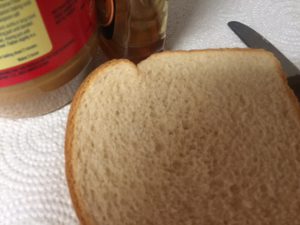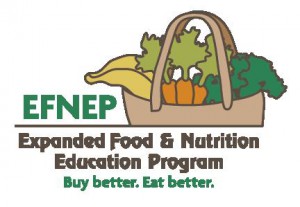
by Kendra Hughson | Aug 16, 2017

Jazz up traditional peanut butter sandwiches with raisins or carrot straws.
Now that school is back in session, are your struggling to find healthy and safe lunches to pack? Do you cringe with every peanut butter and jelly sandwich you make? If you are like me, finding healthy lunch time meals that are packed with nutrition, offer some variety, and won’t end up in the trash requires planning, creativity, and lots of energy!
- Get children involved! Even young school-age children can help make their own lunch. Give children healthy choices and let them decide lunch menus. Children may be more willing to eat the food you pack if they have been involved in the process.
- Dunk it and dip it. Children love finger foods they can dip. Serve raw vegetables with hummus or fresh fruit with yogurt.
- Offer some “fun foods.” Let children choose some low-calorie fun foods. Healthy or low-calorie options for the sweet or crunchy tooth include pretzels, plain popcorn, mini rice cakes, low-fat pudding, a miniature chocolate bar, or a rice crispy treat.
- Jazz up boring favorites. Peanut butter and jelly sandwiches are a nutritious favorite. Liven them up with carrot straws or raisins. Add color and nutrition to sandwiches with lettuce, tomato, or sliced vegetables.
- Keep lunches safe. Make sandwiches the night before and freeze them. Freeze juice boxes or water bottles to keep foods cool and for a cool lunchtime beverage. Experiment to be sure there is enough time before lunch for the items to thaw.
- Re-think leftovers. Even if children don’t have access to a microwave to reheat food from last night’s dinner, some leftovers work for lunch, too. Try cold pizza, meat sliced for a sandwich, or pasta salad.
- Skip the fuss and sign up for the National School Lunch Program. While some schools may offer free and reduced-price lunches to eligible families, the school lunch program is for everyone. School lunches provide low cost, balanced meals that follow USDA dietary guidelines. Take a break from packing lunch and check out your school’s lunch menu.
Turkey Rolls:
2 flour tortillas
2 tsp mayonnaise
2 slices thinly sliced deli turkey
½ cup shredded lettuce
2 Tbsp shredded cheese, any type
Lay out tortillas. Spread with mayonnaise. Layer turkey slice, lettuce and cheese onto tortillas. Roll up and wrap. Makes 2 servings.
One serving provides 218 calories, 9 g total fat, 20 g carbohydrate and 14 g protein.
Exchanges – 1 bread, 2 meats, 2 fats.
Recipe source: Janis G. Hunter, HGIC Nutrition Specialist, and Katherine L. Cason, Professor, Department of Food, Nutrition, and Packaging Sciences, Clemson University, New 08/08. Revised 09/11. Image added 8/15. HGIC 4114
by Amy Mullins, PhD, RDN | May 13, 2014
Parents and guardians across America work hard everyday to put food in the mouths of their families. We all have to make choices in the foods we eat and provide for our children. This process of planning, shopping, and preparing healthy meals is challenging, but especially for those that have limited income and resources. These families that struggle for food security put themselves at risk for a host of nutrition-related chronic diseases including obesity, high blood pressure, cardiovascular disease, and diabetes.

EFNEP teaches families how to shop for healthy foods, plan and cook meals, save money on food purchases, and incorporate physical activity into their lives.
Over 26% of Leon County’s population is living below the poverty level, which is much higher than the 16.5% of Florida’s total population. In addition, a relationship between income level and overweight status has been established. Of the adults in our county that make less than $25,000 per year, over 70% of them are overweight or obese. These are scary statistics that bring the problems of poor nutrition and limited-income to light.
Having access to nutritious food is a good first step toward putting healthy meals on the family’s table. Surprisingly, only 77% of eligible Floridians in 2010 asked for and received assistance through the Supplemental Nutrition Assistance Program (SNAP). Sadly, it seems that a very large number of eligible Floridians are not getting the help that they need to feed their families.
How can parents and caregivers make the most of their food budget and make healthier choices when planning, shopping, and preparing meals? This is where nutrition education can play a key role to ultimately improve the diet and health of the total family. The Expanded Food and Nutrition Education Program (EFNEP) is offered in over 10 counties in Florida, including Leon County, and is designed to empower families to practice and adopt positive nutrition and lifestyle behaviors. Classes are free and consist of a series of 8 interactive lessons that teach adult participants how to shop for healthy foods, plan and cook meals, save money on food purchases, and incorporate physical activity into their lives.
Classes are offered throughout the county at various community sites. If you are interested in starting a class with your group, church, or worksite, or to find out more information about EFNEP, contact Amy Mullins, Registered Dietitian and Family and Consumer Sciences Agent at UF IFAS Leon County Extension, amymullins@ufl.edu or 850-606-5203. Learn more about SNAP eligibility and benefits by visiting http://www.fns.usda.gov/





